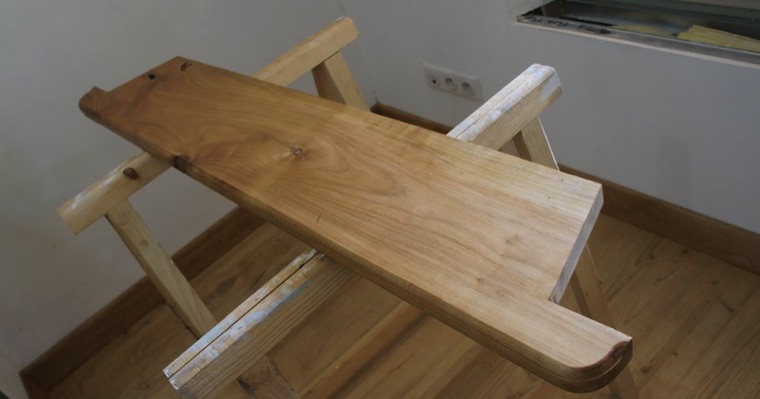Progress - Office
November 2013
Having repaired the floors in the Living and Dining Rooms, attention now turned to the Office. This room had been "renovated" in the recent past, to make it suitable for use as a bedroom for the aged mother of the previous household. It appeared that the flooring had been replaced with short floorboards. We had noticed in the cooler months that the floor was quite "wavy", as shown in the photos below, and had quite a bit of spring in it. In summer, however, we noticed that the floor appeared quite flat and stable, so we figured that it had something to do with the moisture content of the floorboards. The marble surrounds of the fireplace had also cracked quite badly on the floor, again suggesting a problem with stability of the sub-floor structure.
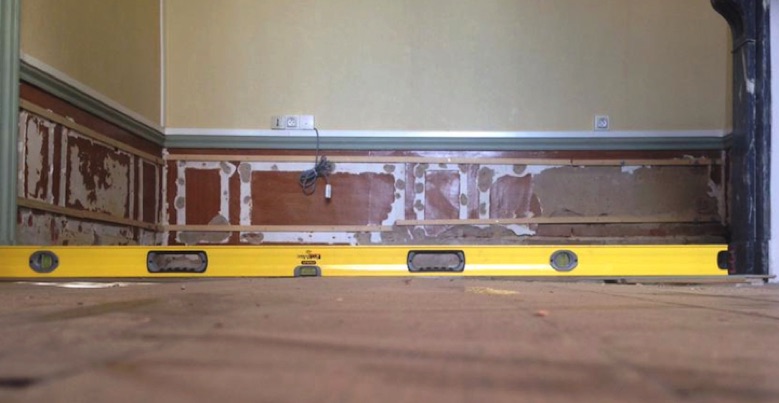
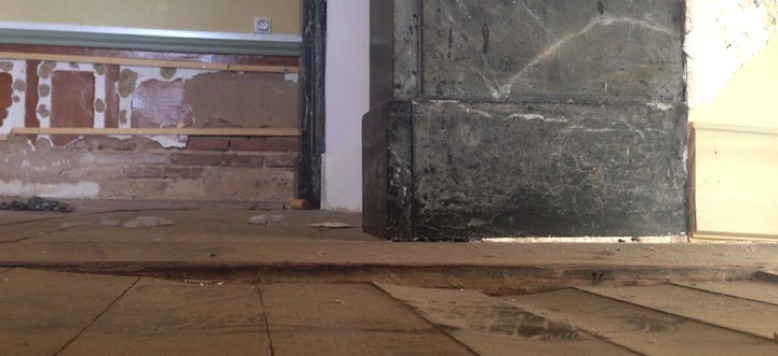
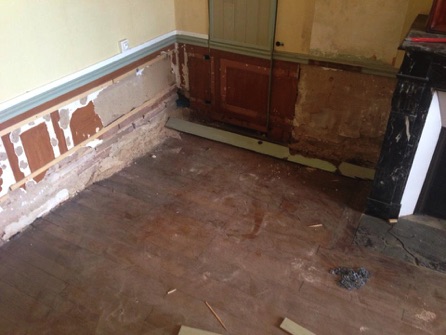
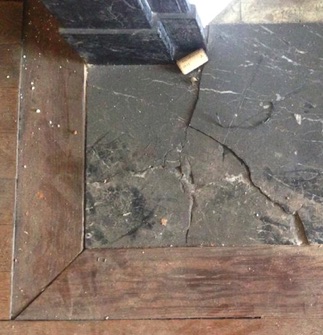
When we pulled up the floorboards for an inspection, our fears were confirmed. The underside of most of the floorboards had started to rot, and the mildew on the earth beneath the floor was quite pronounced (as was the smell!). The cross-beams, which were in most contact with the earth, were in very poor condition and all have to be removed, leaving "trenches" in the earth as shown below.
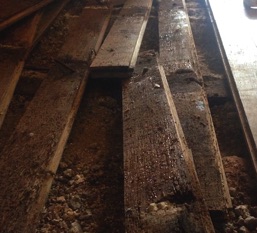
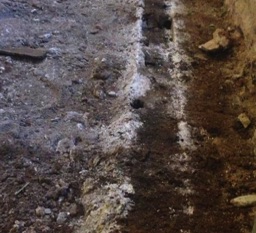
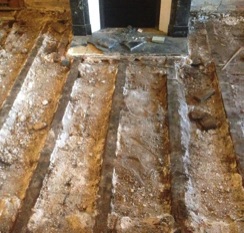
Once again, it was necessary to do a lot of excavation of the earth under the floor in order to get rid of the moist soil and get down to a dry foundation. Under the Office floor, 4 cubic metres of soil was removed.
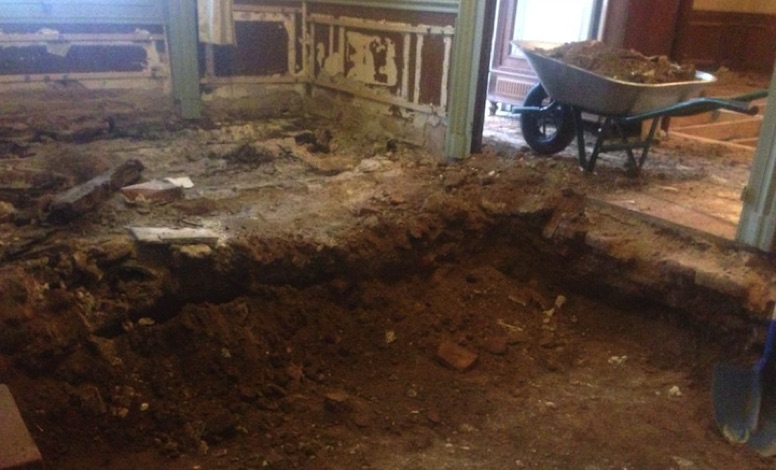
The soil extraction revealed the reason for the cracks in the marble, since there was very little solid support under the fireplace surrounds. So, the rest of the marble surrounds were removed and excavation continued until a dry sub-surface was reached. Because of the high moisture content in the soil, the concrete under the surrounding walls had also started to deteriorate. So, instead of being able to bolt the new sub-floor into this concrete, it was necessary in this room to construct an entirely new concrete surround using plywood to create formwork walls within which the concrete would be poured.
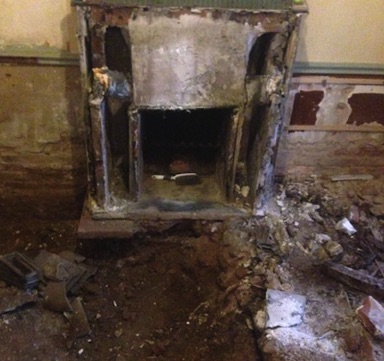
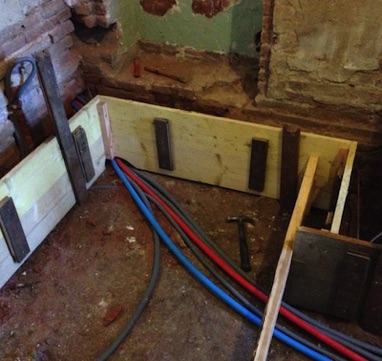
During this construction, the value of the covered verandah at the rear of the house became apparent again, as a useful place for mixing concrete and doing other messy jobs, even in inclement weather.
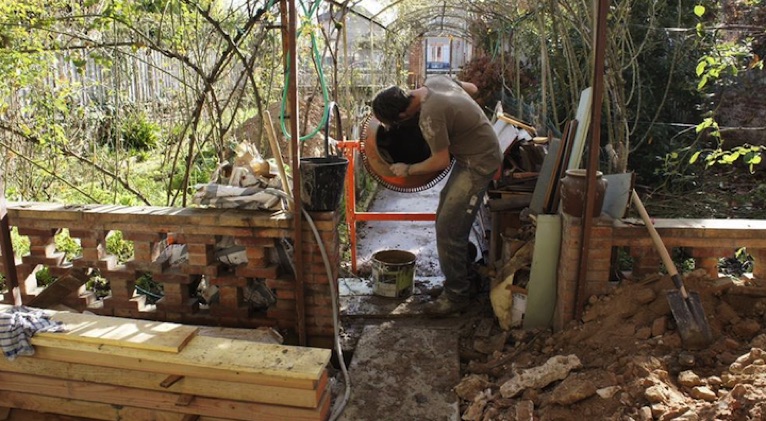
After the formwork walls had been constructed around all sides of the room, they were filled with concrete and the traditional builders names were engraved for posterity.
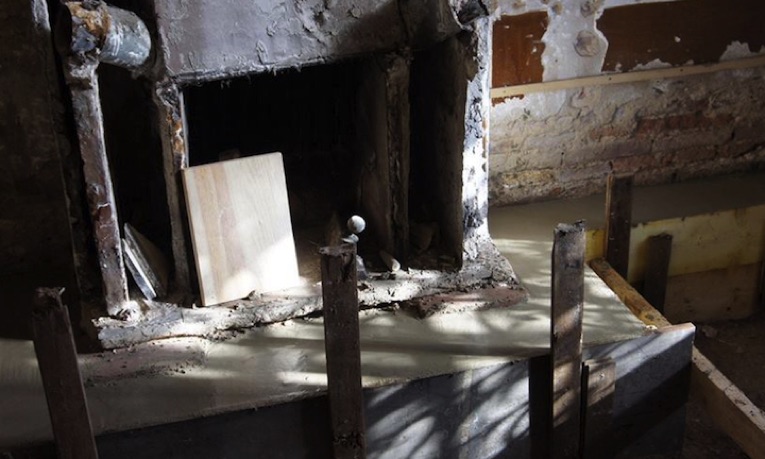
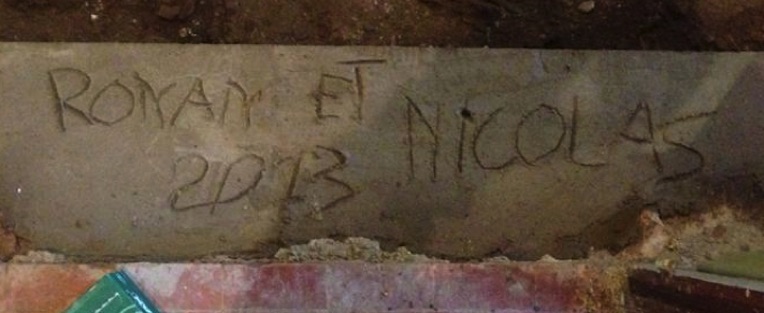
After a few days of curing, the formwork was removed to reveal the new concrete walls around the subfloor area. Note all the cables and piping now running through this sub-floor area (which makes life considerably simpler for the plumber and electrician). Also note the solid concrete foundation on which the fireplace marble surrounds will now sit.
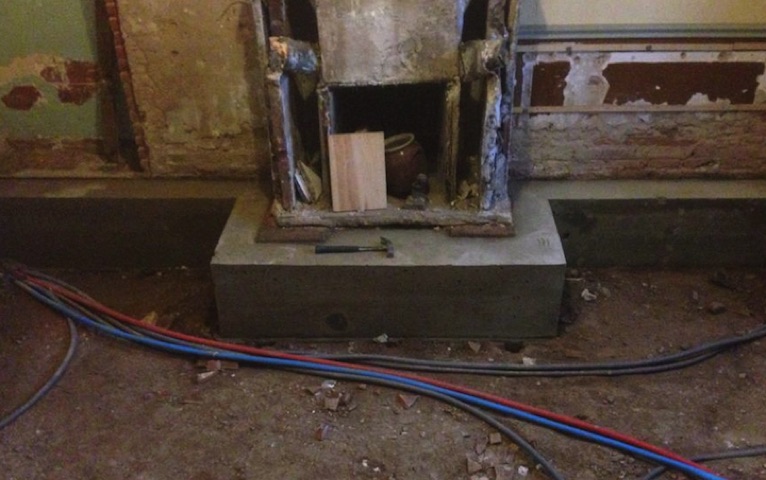
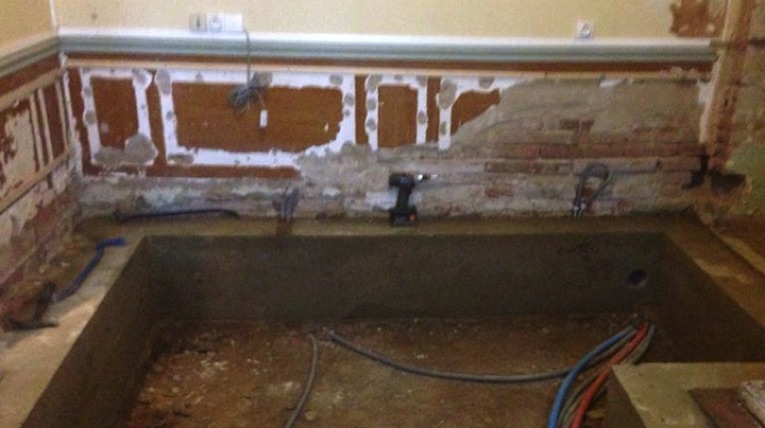
At the right of the coffer wall in the picture above, a 10cm hole can be seen. This hole goes through to the top of the basement area on the Rue Gambetta side of the house. A similar hole goes through to the verandah at the rear of the house. These holes will allow air to naturally cross-ventilate through the sub-floor space under the Office, thus ensuring that any build up of moisture will be controlled. This will be assisted by the VMC ventilation system to be installed later.
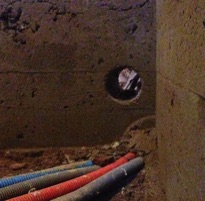
With the concrete wall now in place, a new sub-floor structure was built and attached to the walls. A concrete support was also built in the middle of the room to give the sub-floor structure more support.
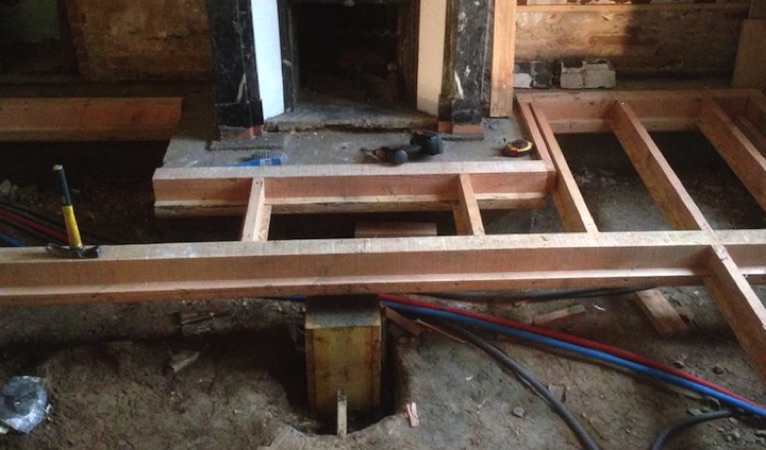
Once the frame had been built, Oriented Strand Board (OSB) was laid under the frame to provide another level of separation of the earth below from the floorboards above.
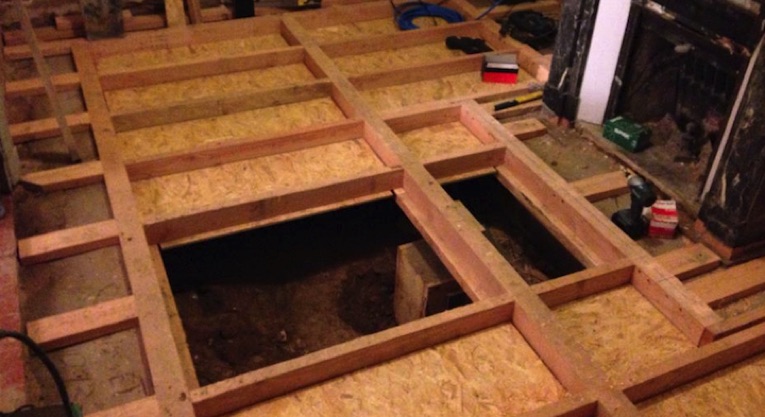
Since so many of the existing floorboards had been discarded because of the rot on the under-surface, it was decided to lay an entirely new floor, using floorboards with a similar grain pattern as in the Living and Dining Rooms. First, however, they were acclimatised to the temperature and humidity of the room for a few weeks, to avoid excessive shrinking after they were laid.
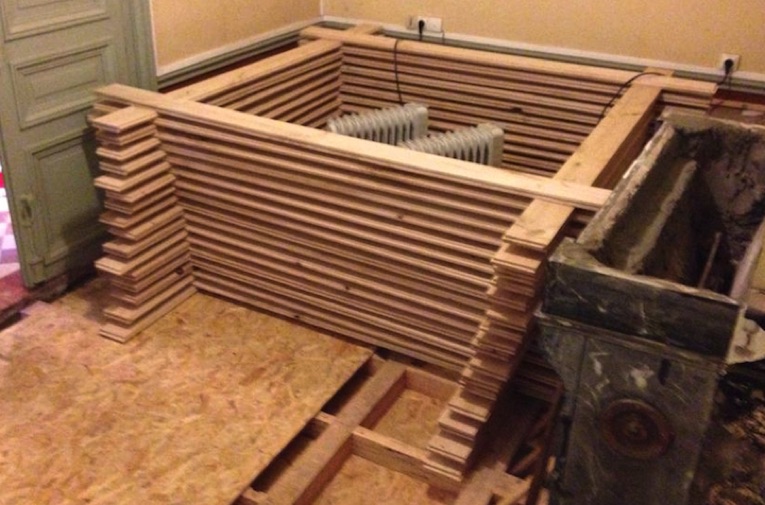
Once the new floorboards were acclimatised to the room, they were laid on the new subfloor. The marble chimney was also reassembled, and now awaits a replacement piece of matching marble on the floor.
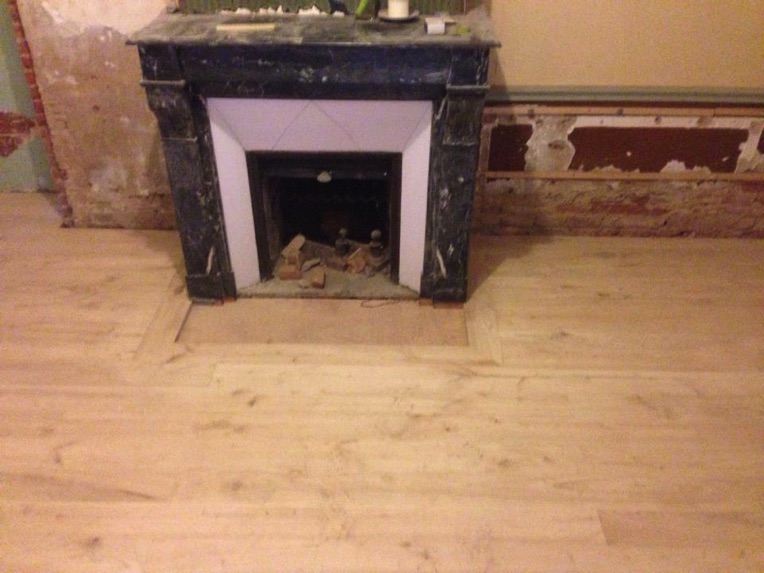
The Office gained a bookcase area in the renovation, after a flimsy cupboard door was taken off a doorway that it would appear originally passed through to the Storeroom. In addition, all the low quality dado timber wall panelling was removed. The Office walls will be restored to their previous design, with timber beading frames under a timber batten about 60cm above floor level, painted in complementary colours as in the Living and Dining Rooms.
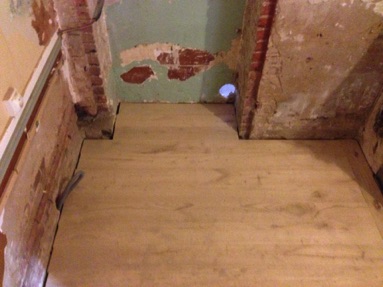
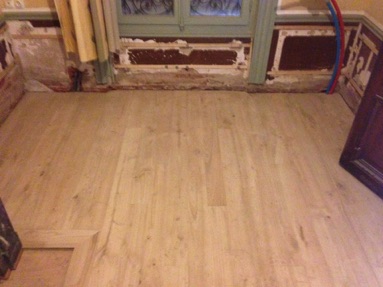
March 2014
The suspended ceiling hangers were installed this month in preparation for the new ceiling.
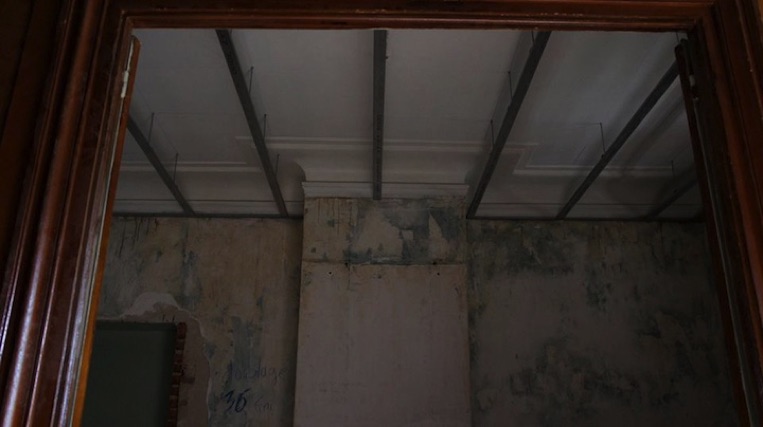
April 2014
April has seen the new double-glazed windows installed in the Office (the old ones are shown in this photo). After the renovation, we will have 16 pairs of these old windows, all in reasonable condition. Hopefully, we may be able to sell them to someone who needs older style windows for a restoration project, although most people (like us) are now going for the double-glazed variety for energy efficiency reasons (indeed as shown at right below, we were later able to find a home for the old windows and doors with the brother of a friend of Nico and Miyu). The VMC ductwork has now been installed into this room, and will be connected to an outlet grill which will be set into the suspended ceiling when it is fitted.
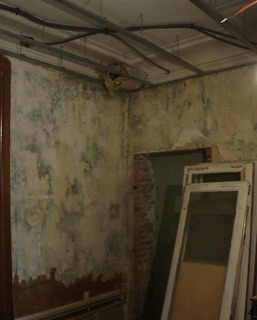
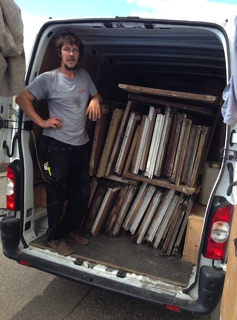
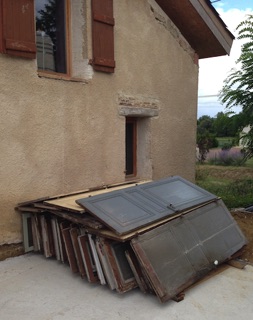
August 2014
By July all the structural work had been completed in the Office, including the bookshelf area that used to be a cupboard (that used to be a door). With the floor sanded and stained and a first coat of paint on the walls and ceiling in August, the room is starting to look completed.
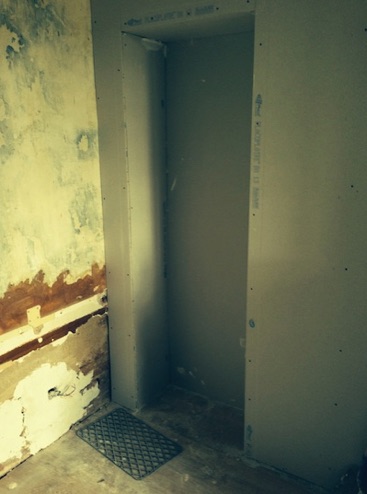
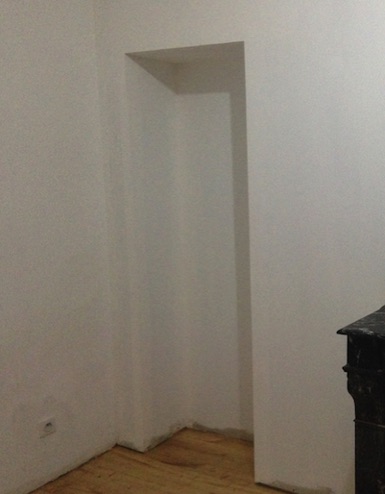
November 2014
One of the features in the Office, and in all other rooms with windows in double walls, is the extended window sill that also serves as a window seat within the doubled wall (this is especially useful in some rooms on the higher floors for sitting and looking out at the boats passing on the Canal de Garonne). Since all the window openings are slightly different, each window seat is custom made, as shown in this one for the Office. It gives the window a very complete and confortable feeling.
